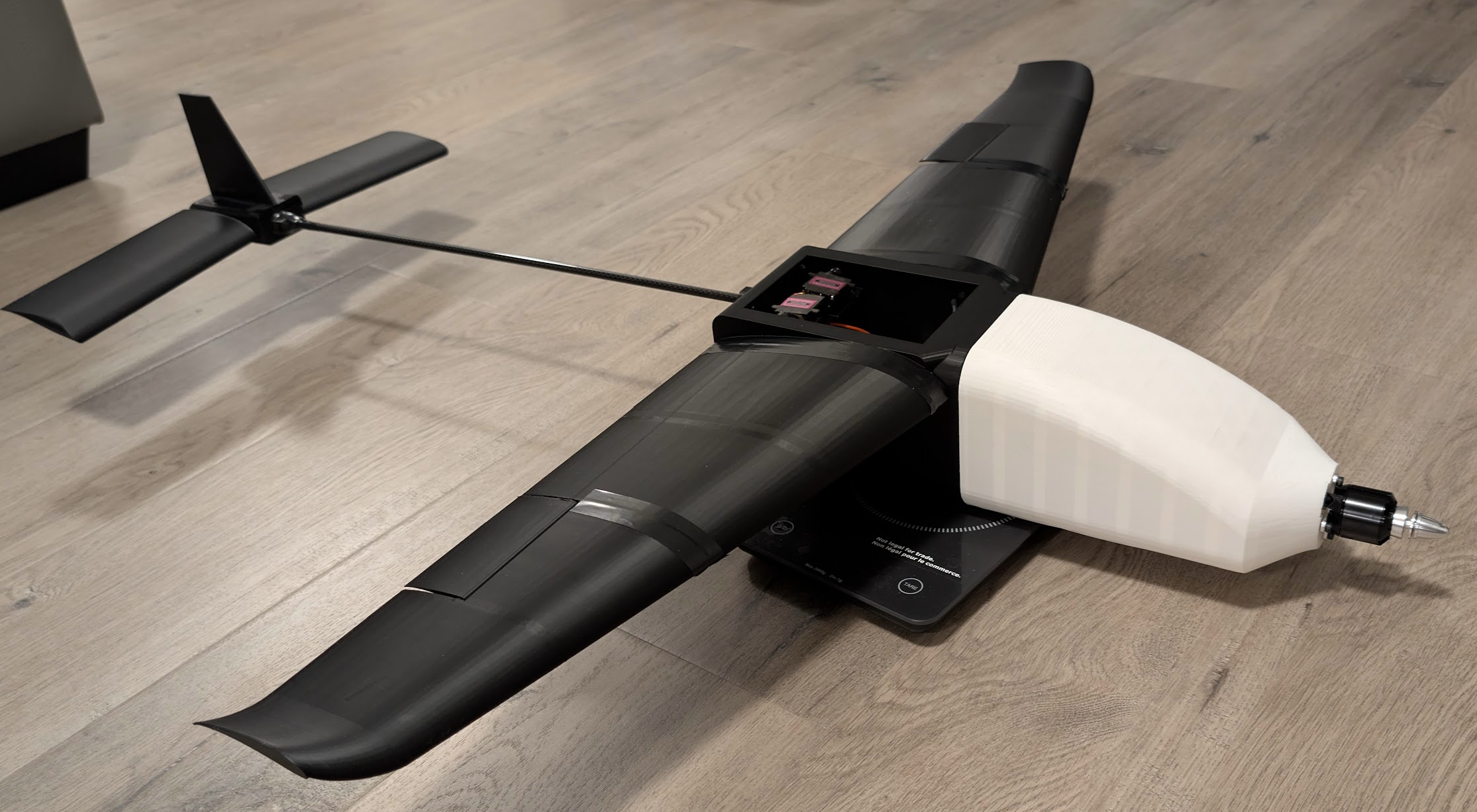.png)
.png)
A Zipline drone inspired project. Custom made 3D printed fixed wing drone, designed to deliver packages straight to your home
December 2024 - Present


The graph shows the lift coefficient versus the angle of attack for an airfoil, highlighting its aerodynamic performance. It indicates a linear increase in the lift coefficient with alpha until reaching a peak, followed by a sudden drop, which signifies stall behavior.

These calculations show that the aircraft operates at a Reynolds number of about 1.3×106 indicating turbulent airflow typical for small-scale aircraft. The resulting lift coefficient (CL= 1.35) and lift force confirm that at 18 m/s, the wing can generate sufficient lift for stable flight—validating the aerodynamic design.

To add stability to the wings, we inserted a set of carbon rods into the wings. Two through the thicker portion of the wing to make it rigid, and one through the thinner side for the aileron to pivot around.

The Selig S1223 airfoil is specifically designed for low-speed, high-lift applications, making it highly popular among RC plane enthusiasts, particularly for those building slow-flying planes with payload capabilities. Since our objective in the long run was to build a plane that could carry a payload, this was an easy choice for us.
All the CAD and electronics used in this project have been open-sourced. Check them out at the GitHub link below.

Max thrust test with 11x5.5in propeller
Initial Elevator Aileron Tests for fixed wing RC plane.